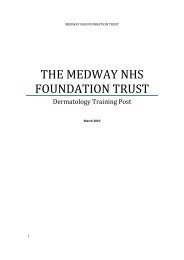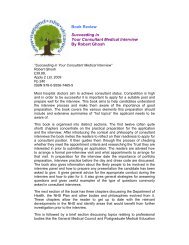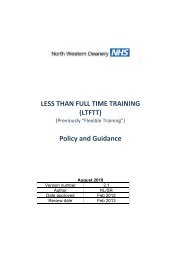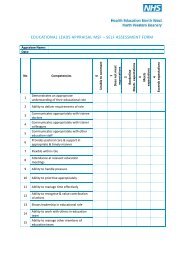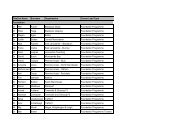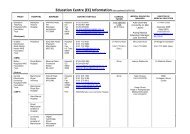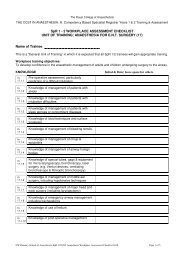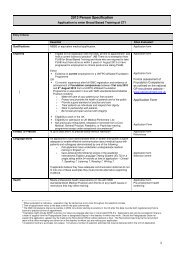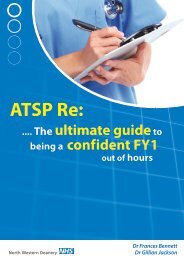Rota Design for 2009 - North Western Deanery
Rota Design for 2009 - North Western Deanery
Rota Design for 2009 - North Western Deanery
- No tags were found...
Create successful ePaper yourself
Turn your PDF publications into a flip-book with our unique Google optimized e-Paper software.
8. Support, evidence andguidance already available1. Royal college guidanceIn anticipation of full WTD implementation in <strong>2009</strong>many of the Royal Colleges have already issued helpfuladvice. In relation to minimum ‘cell’ sizes on full shiftrotas these colleges have issued specific advice:Royal CollegeMinimum Suggested Cell Size <strong>for</strong>48 Hour Compliant Full Shift <strong>Rota</strong>Royal College of Physicians 6 10Royal College of Anaesthetists 7 8Royal College of Surgeons 8 82. BMAThe BMA published a useful rota design booklet in2004 9 accompanied by guidance on monitoring 10 andhandover 11 .This further clarifies the New Deal rules andpossible rota patterns.3. NHSTo support WTD implementation in 2004 the <strong>for</strong>merNHS Modernisation Agency issued rota design guidanceto the service 12 .4. ‘Cell Of 11’ 13Studies were undertaken within NHS <strong>North</strong> West tounderstand the impact of different rota patterns, andmore specifically, full shift working upon normalworking day availability. Anecdotal reports were thatjuniors’ presence was felt to be reduced but there was aneed to quantify this perception. Given most trainingopportunities and service delivery takes place during thedaytime it also seems sensible to try and maximisedaytime availability on 48 hour rotas being planned <strong>for</strong>WTD compliance.3. Negative impact upon health of working shifts butparticularly night shift working.Minimise exposure to night workingHow?• Increase pool of doctors providing cover overnight– Hospital at Night– Reconfiguration or services– Employ more juniors.• Improve rostering to minimise number of consecutivenight shifts worked by any individual• Structured rest may compensate <strong>for</strong> sleep loss andpublished literature on coping with shift work.In addition to this there are many sensible reasons as towhy we should be reducing the exposure of individualsto night shift working:1. Per<strong>for</strong>mance is poorer overnight, individuals aremore likely to make errors particularly when workingconsecutive night shifts 6 142. Learning potential is poorer overnight 1338



